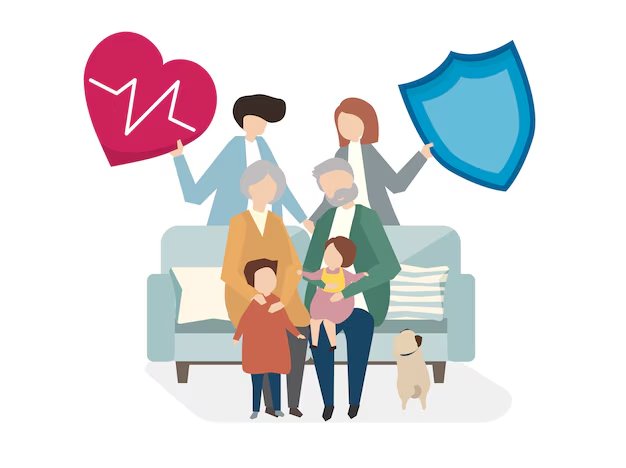Micro insurance
Microinsurance is an innovative and essential financial product designed to protect low-income individuals and families against specific risks. By offering affordable and accessible insurance coverage, microinsurance aims to provide a safety net for those who are often excluded from traditional insurance markets. This article explores the concept of microinsurance, its importance, key components, and the impact it has on low-income communities worldwide.
What is Microinsurance?
Microinsurance refers to insurance products specifically tailored to meet the needs and financial capabilities of low-income populations. These products provide coverage for various risks, including health, life, property, and agriculture, among others. The premiums for microinsurance policies are typically low, making them affordable for individuals and families with limited financial resources. The goal of microinsurance is to offer protection against unforeseen events that can lead to significant financial hardship.
The Importance of Microinsurance
1. Financial Protection
Low-income individuals and families are often the most vulnerable to financial shocks resulting from illness, accidents, natural disasters, or other unforeseen events. Microinsurance provides essential financial protection by covering the costs associated with these events, helping policyholders avoid severe financial strain and poverty traps.
2. Access to Healthcare
Health microinsurance is particularly important for low-income populations, who may lack access to adequate healthcare services. By covering medical expenses, hospital stays, and medications, health microinsurance enables individuals to seek timely medical treatment without the fear of incurring overwhelming debt.
3. Promoting Economic Stability
Microinsurance plays a crucial role in promoting economic stability for low-income households. By mitigating the financial impact of adverse events, microinsurance allows families to maintain their livelihoods, invest in education, and pursue economic opportunities without the constant fear of financial ruin.
4. Encouraging Risk Management
The availability of microinsurance encourages low-income individuals to adopt better risk management practices. Knowing they have a safety net in place, policyholders are more likely to invest in productive activities, improve their living conditions, and take advantage of economic opportunities that they might otherwise avoid due to fear of potential losses.
5. Supporting Community Resilience
Microinsurance contributes to the resilience of entire communities by providing a collective safety net. When individuals and families are protected against financial shocks, the overall community is better equipped to recover from disasters, maintain social cohesion, and pursue sustainable development.

Key Components of Microinsurance
Microinsurance policies can vary widely depending on the type of coverage and the target population. However, some common components include:
1. Health Insurance
Health microinsurance provides coverage for medical expenses, including doctor visits, hospital stays, surgeries, and medications. Some policies also cover preventive care and maternal health services. This type of insurance is crucial for ensuring access to healthcare for low-income populations.
2. Life Insurance
Life microinsurance offers financial protection to the beneficiaries of the policyholder in the event of their death. This can include coverage for funeral expenses, outstanding debts, and income replacement for the family. Life microinsurance provides peace of mind and financial stability for the policyholder’s dependents.
3. Property Insurance
Property microinsurance covers the loss or damage of assets, such as homes, livestock, and personal belongings, due to natural disasters, fires, theft, or other perils. This type of insurance helps individuals and families rebuild and recover after a loss, protecting their livelihoods and investments.
4. Agricultural Insurance
Agricultural microinsurance is designed to protect farmers and agricultural workers from the financial impact of crop failures, livestock losses, and other agricultural risks. Coverage can include weather-related events, pests, diseases, and market fluctuations. Agricultural microinsurance supports food security and rural development.
5. Accident and Disability Insurance
Accident and disability microinsurance provides coverage for injuries, disabilities, and accidents that may prevent the policyholder from working and earning an income. This type of insurance helps individuals cope with the financial challenges associated with temporary or permanent disabilities.

Delivery Channels and Distribution
Effective delivery and distribution of microinsurance products are crucial for reaching low-income populations. Some common channels and strategies include:
1. Microfinance Institutions (MFIs)
Many microinsurance products are distributed through microfinance institutions, which already have established relationships with low-income clients. MFIs can leverage their networks to offer microinsurance alongside their financial services, such as microloans and savings accounts.
2. Community-Based Organizations
Community-based organizations, such as cooperatives and self-help groups, play a vital role in promoting and distributing microinsurance. These organizations have deep roots in their communities and can effectively raise awareness about the benefits of microinsurance and facilitate enrollment.
3. Mobile Technology
Mobile technology has revolutionized the delivery of microinsurance by enabling digital platforms for enrollment, premium payments, and claims processing. Mobile phones and apps make it easier for low-income individuals to access insurance services, especially in remote or underserved areas.
4. Partnerships with NGOs and Governments
Non-governmental organizations (NGOs) and government agencies often collaborate with insurance providers to promote and distribute microinsurance products. These partnerships can enhance outreach efforts, provide subsidies, and support awareness campaigns to increase insurance penetration among low-income populations.
Challenges and Solutions
Despite the benefits of microinsurance, there are several challenges to its widespread adoption and effectiveness. Some common challenges and potential solutions include:
1. Affordability
While microinsurance premiums are designed to be low, they can still be unaffordable for the poorest individuals. Subsidies, government support, and innovative pricing models can help make microinsurance more accessible.
2. Awareness and Education
Many low-income individuals are unaware of the benefits of insurance or distrustful of financial products. Awareness campaigns, financial literacy programs, and community engagement can help build trust and understanding of microinsurance.
3. Distribution and Accessibility
Reaching remote or underserved populations can be challenging. Leveraging mobile technology, community networks, and partnerships with local organizations can improve distribution and accessibility.
4. Claims Processing
Efficient and transparent claims processing is essential for building trust in microinsurance. Simplifying claims procedures, using technology for verification, and providing timely payouts can enhance the customer experience.
5. Sustainability
Ensuring the sustainability of microinsurance programs requires careful management of risks and costs. Developing innovative products, using data analytics, and fostering public-private partnerships can support the long-term viability of microinsurance.
Case Studies: The Impact of Microinsurance
Case Study 1: Health Microinsurance in India
In India, a health microinsurance program was launched to provide coverage for low-income families in rural areas. The program offered affordable premiums and covered a range of medical services, including hospitalization and surgeries. As a result, many families were able to access healthcare services they previously could not afford, leading to improved health outcomes and financial stability.
Case Study 2: Agricultural Microinsurance in Kenya
In Kenya, an agricultural microinsurance initiative was introduced to protect smallholder farmers against crop losses due to drought and other climate-related risks. The insurance provided payouts based on weather data, ensuring that farmers received timely compensation. This support enabled farmers to invest in better farming practices, increase productivity, and enhance food security.
Case Study 3: Life Microinsurance in the Philippines
A life microinsurance program in the Philippines targeted low-income individuals and families, offering coverage for funeral expenses and income replacement. The program’s simple enrollment process and affordable premiums made it accessible to many people. The financial protection provided by the insurance helped families cope with the loss of a breadwinner and maintain their livelihoods.
Conclusion
Microinsurance is a powerful tool for enhancing financial inclusion and protecting low-income populations against a range of risks. By offering affordable and accessible coverage, microinsurance provides a safety net that promotes economic stability, resilience, and well-being. As the demand for inclusive financial products grows, innovative approaches to microinsurance delivery and partnerships will be essential for reaching underserved communities and creating a more equitable and secure future.